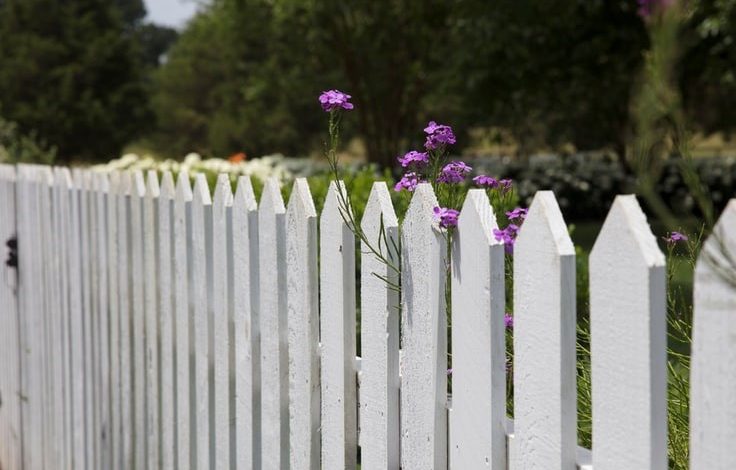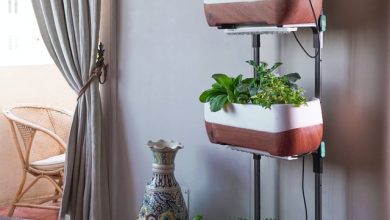How to Build a Garden Fence

A garden fence serves several purposes in your yard. It gives your garden personality and structure and keeps critters away from your plants. It can also add some beauty to your landscape design. Thus, building a garden fence is a fundamentally important idea for your yard.
However, it can be challenging to pick a garden fence design for your garden and go ahead to build it. Every yard is different, and there’s no one-size-fits-all when it comes to garden fencing. The key is to be innovative and know that your garden fence design can have a unique personality.
With this in mind, you can build a garden fence that gives your garden a unique structure that suits it. Here, we’ll give you a quick how-to guide on building a garden fence. Remember, however, that we’re only here to guide you, not construct it for you. You’re the one to decide the look your garden eventually takes on.
Functions of a Garden Fence
A garden fence is vital to the structure and safety of your garden. Below are some uses of a garden fence:
Protection from Critters
Without a garden fence, you expose your plants and vegetables to attack from critters, especially deer and rodents. Carrots, tomatoes, cabbages, and other vegetables are exposed to the danger of being damaged if they’re not protected, and a garden fence offers this much-needed enclosed protection.
Your pets and kids can also pose a danger to your garden. Pets sometimes stray out of the house into the garden, causing damage in the process. Kids can get carried away during playtime and run into the garden, causing ruin as they play. Building a garden fence will protect your fruits, vegetables, and plants from events like these.
A Form of Partition
If you share a backyard space with a neighbor, then a garden could help mark your side of the yard, separating it from your neighbor’s. Also, a garden fence helps separate other parts of your yard from the garden.
Much-Needed Privacy
If your garden is at the back of your house and you live in a neighborhood where your neighbor’s backyard directly overlooks yours, then you probably need a fence for some privacy. The enclosure is especially vital if you use your yard for other purposes besides gardening.
For most people, a backyard is an area for some outdoor relaxation. If this is the case with yours, you probably don’t want the neighbors intruding in your time out with your friends or family. Building a garden fence just high enough to provide you with the seclusion you desire wouldn’t be a bad idea.
A Great Landscape Design
When we talk of fences, we usually think in the direction of protection and privacy, but a wall can also add some beauty to the design of your yard. Building your fence with some color and innovative design can spice your backyard landscape and give it an added personality and charm.
Structure and Shape
A fence can give your garden some structure, shape, and form. When you have an uneven garden, building a wall in a circular or square-shaped pattern can add a touch of boldness to it.
DIY: Building a Simple Garden Fence
The thing about DIYs is you don’t need much-complicated stuff. Keep it simple, and you’re pretty much good to go. And while there are many excellent garden fence designs, much of what’s required to build a garden fence is essentially the same. Regardless of the model you prefer, there are basic things that every garden fence has in common when it comes to construction.
These simple things are what you need to know when you want to create a simple enclosure for your garden. That’s why we’ll just give you the basics about building a simple garden fence. Once you understand the technicalities for a simple one, you can decide to spice yours according to your preference.

What You’ll Need
- A drill or post hole digger
- Wooden posts (the number and height of the posts depends on your garden size and how high you want the fence to be respectively)
- Metal T-posts (the length of the metal posts also depends on the desired height of your enclosure)
- Gravel
- Fence staplers
- Mesh wire (these should be a little bit shorter than the wooden posts)
- Hardware cloth (the length also depends on the size of your fence. It should be about four-feet tall though)
- Zip ties
- A gate (you could construct yours – we’ll tell you how – or get one made for you)
Getting Started
Step One: Mark Out the Area for Your Fence and Drill Holes for the Posts
Once you have your supplies ready, the first step in building your fence is to mark the area around your garden where it will stand. Once you’ve done this successfully, use the driller or post hole digger to drill holes for the wooden posts. Drill your holes according to the number of posts you’ll need for the fence.
Usually, for a small garden, a basic, square-shaped fence would suffice. Thus, you’ll need four holes for four posts around the corners and an additional two for the gate. However, you could use more posts depending on your garden size and the desired shape you want for your fence. You’ll have to drill holes for the metal t-posts between the space for the wooden posts as well.
Also, ensure you drill the holes for the wooden posts at least three feet into the ground. This depth is especially important if you’ll not be setting the posts in with concrete. How deep the posts go into the holes gives the fence stability during a storm. You could also decide to brace the posts with extra wooden posts set diagonally. The aim is to ensure they are stable and firm.
The holes for the metal t-posts should, however, be at least two feet deep. The space between each metal post depends on the size of your garden. However, they should be evenly spaced and not too close.
Step Two: Set the Wooden and Metal T-Posts
Once you’ve finished drilling the holes into the ground, set the posts in position. Before placing the posts, though, fill the bottom of the holes with a shovelful of gravel for drainage. Then, set the posts on the gravel.
Once that is done, fill the holes with both the gravel and sand, alternating between the two. Complete the filling with sand. After this, set the metal posts into the ground at the same level as the wooden posts. Also, ensure they’re stable and firm. Note that there’ll be no need to set metal posts in the space reserved for the gate.

Step Three: Attach the Mesh Wire Round the Posts
Once the wooden and metal posts have been securely set into the ground, next is the mesh wire. Attach the mesh wire around the fence, fixing it to the wooden posts with the fence staples and the metal posts with the zip ties. Ensure the top of the mesh wire is level with the top of the wood and metal posts. It’s also advisable that you attach the mesh wire on the outside of the posts.
Step Four: Attach the Hardware Cloth Round the Bottom of the Fence
Once the mesh wire is attached, then comes the hardware cloth. To fix in the hardware cloth, dig a one or two-feet trench around the outside of your fence. Next, set one or two feet of the fabric inside the channel, depending on the depth of the trench. The purpose of this is to stop critters like rabbits or squirrels from burrowing into your garden.
Make sure to fold the part of the cloth in the channel at the base to thicken it. After doing this, secure what’s left of the fabric to the posts using the zip ties.
Step Five: Fix in the Gate
When it comes to the gate for your fence, you could decide to get one made or create one for yourself. If you choose to make one for yourself, then you’ll need additional supplies. These supplies include four cedar boards – for the top, bottom, and sides – two or three hinges, nails, poultry netting, and an eyehook latch, or any other lock you can find. The poultry netting should be the same size as the gate.
The first thing you’ll need to do is to nail the boards together in a square shape. You could decide to add one or two more cedar boards as diagonals. Next, attach the poultry netting and the latch to the boards, and then hinge the board against the posts constructed in the space made for the gate. And voila! Your garden fence is well and truly ready.
These steps are simply all you need to construct a simple garden fence. With this basic knowledge of building an enclosure, you can decide to spice things up and experiment a bit to make a partition of your design. Remember, there are no one-size-fits-all ways of creating a garden fence. The key is to be innovative and build a wall that uniquely suits your garden.



